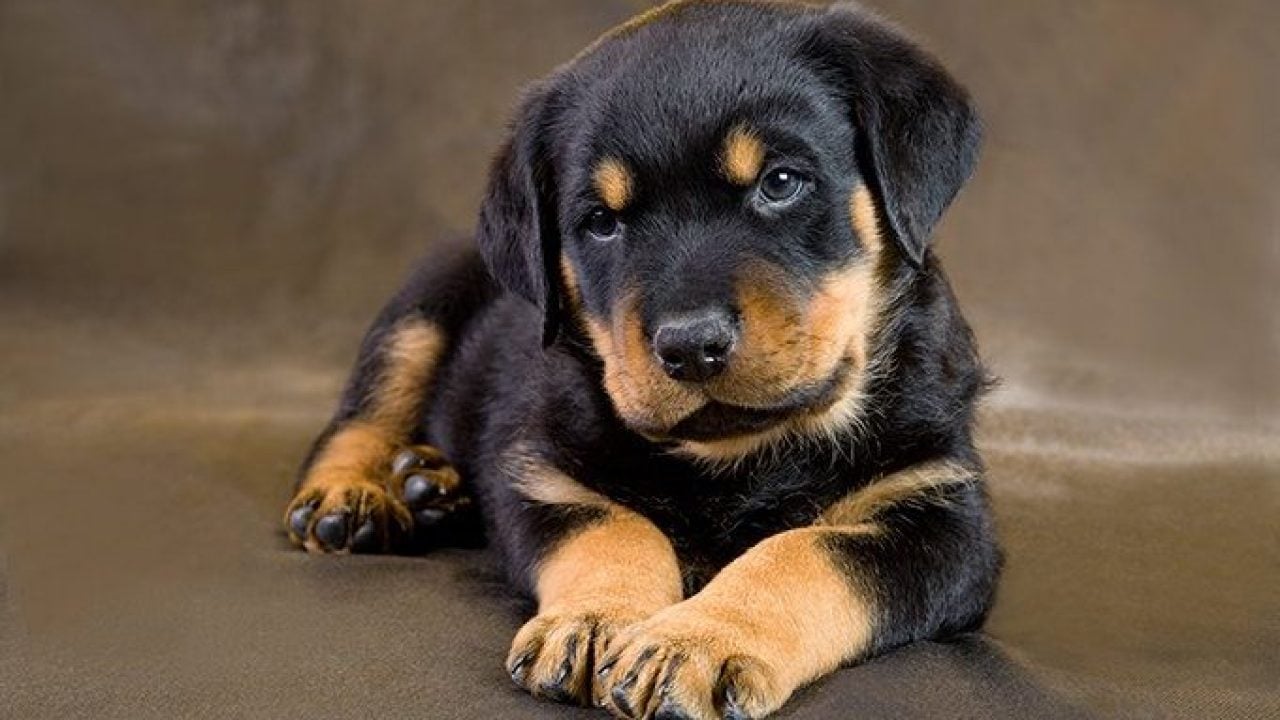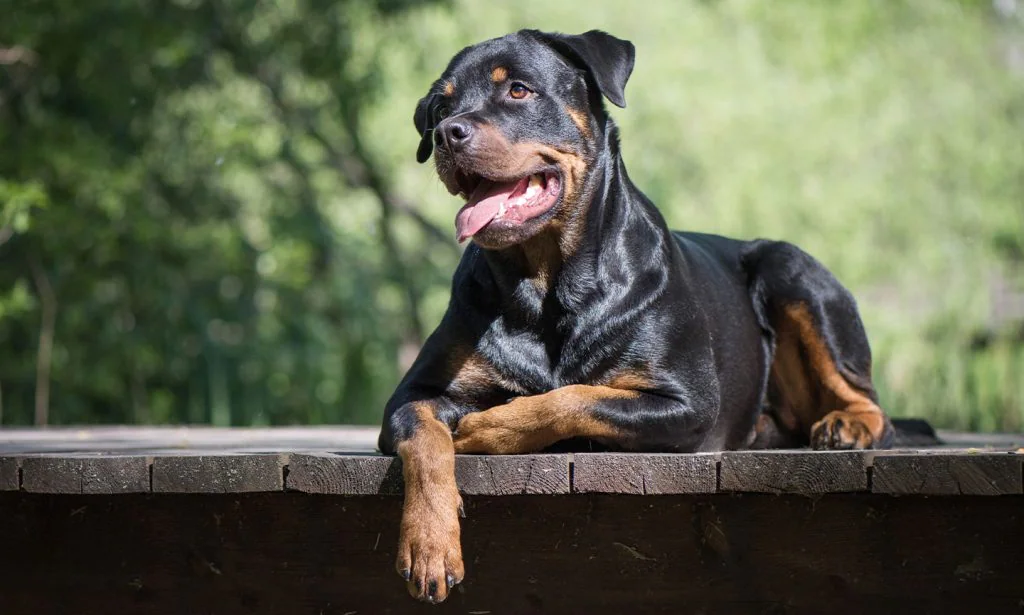The Rottweiler is a working breed that has worked as a herder, draft dog, soldier, guard, bodyguard and, finally, companion. The track record is indeed impressive. But what qualities prevail among representatives of modern lines? We talk about the features of the Rottweiler breed of our days, the basics of education and safety measures when communicating with young children and strangers who have entered your territory.
The history of the appearance and distribution of the breed
The Rottweiler is one of the oldest breeds of the Roman Empire. Animals similar in phenotype to the modern Rottweiler descended from the Old World Molossians, mastiff-type dogs, and were used as cattle drivers who followed the army in order to provide provisions, and later, warrior dogs in a frontal attack on the enemy.

Already in those days, the tail of the animal was docked. However, in the description of the modern breed standard, docking is denied.
The rapid spread of the breed falls on the time of conquests through the Alps led by Claudius Augustus (74 BC). Having founded colonies in southern Germany near the Neckar River, favorable for the development of agriculture, the legionnaires continued to use dogs as shepherds and guards.
By the early 1500s, the animals had spread throughout Germany. However, the town of Rottweil is considered to be the starting point of their settlement – the modern breed is named after him.
In the Middle Ages, the specialization of the Rottweiler expanded: the transportation of goods was added to the pursuit of cattle and protection. Due to the developed musculature, Rottweilers were harnessed to trading carts that transported mainly raw meat. At that time, the Rottweiler was called the “butcher’s dog”.
In the middle of the 19th century, with the advent of railways, the need for draft power and cattle drive was gradually lost. Sheep and goods began to be transported on trains, and the Rottweiler breed began to be forgotten and probably would have ceased to exist if not for a single case. In 1901, on the front pages of German newspapers, there was an article about how the sergeant-major of the German police, with the help of a Rottweiler breed dog, settled a conflict with an aggressively behaving company of sailors. Since then, Rottweilers have been bred to guard homes and have been recruited into the police force.
In 1910, the German Police Department ranked the Rottweiler as an official service dog along with German Shepherds and Airedales (Airedales).
In 1921, the official name of the Rottweiler was assigned to the breed, and the first Breed Club was opened. At the same time, the first pedigree books (analogues of modern genealogies) appeared.
In 1914, Rottweilers came to the territory of the Russian Empire. However, due to the artificially narrowed specialization – the protection of land – they did not find much popularity.
Another chance to spread throughout the country was presented only after the end of the Second World War. At that time, Rottweilers began to be used to work in the police, escort prisoners and guard prisoners of the camps. The Rottweiler, bred in the USSR, was slightly larger, wore longer thick fur and was distinguished by increased aggressiveness. Which is why he gained fame as a dangerous excitable dog that is not bred as a pet.
Aggressive lines are displayed today. If you want to get a Rottweiler, take the time to find a licensed breeder and ask about the working qualities of the parent pair. If a puppy is purchased as a pet, kennels that specialize in breeding dogs for guard duty should be excluded immediately.

Rottweiler
FCI standard
What does a rottweiler look like
A Rottweiler dog is a large animal with a pronounced muscular frame. It has great strength and endurance.
The length of the body is slightly greater than the height at the withers.
Moves at a trot. The step is free, wide.
The coat is straight and hard. The undercoat does not break out over the top coat. The hair on the hind limbs is longer.
The color is black, with tan marks on the cheeks, under the eyes, muzzle, neck, chest, limbs and at the base of the tail.
The tail is not docked. In an unexcited state – hanging.
Breed defects include: underdeveloped musculature, weak bones, narrow, dry head, flat forehead, pointed muzzle, aquiline nose, light or spotted nose, pink or spotted lips that do not fit well to the jaw, narrow jaws with a pincer bite, low-set ears turned back , round light eyes, long neck, long torso, sloping croup, high-set tail, crooked limbs, folds on the head, soft coat of inappropriate length, lack of undercoat, fuzzy tan pattern.